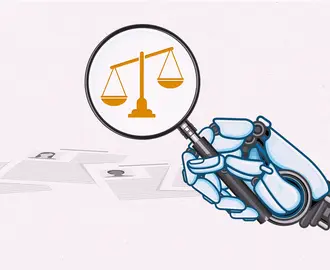Credit: iStock / gremlin
As companies harness the power of information, chief data officers are becoming more common, ensuring compliance and fueling innovation and growth. A recent survey found nearly 70% of companies had a CDO on staff, up from 12% in 2012.
This evolution isn’t without growing pains, as CDOs from Walmart, JPMorgan Chase, Cigna, and Citizens Bank discussed at the recent MIT Chief Data Officer and Information Quality Symposium.
“There continues to be a lack of consensus on what makes an effective chief data officer and on the mandates of the CDO,” said Randy Bean, the CEO and founder of big data management consultancy NewVantage Partners, who moderated the panel. “It’s a nascent role, and organizations are very much in the process of working it out.”
Ambiguity about the CDO role showed up in the 2019 state of data and AI survey conducted by Bean’s company. For example, 38% of the respondents, senior executives from 63 firms, said a CDO should be an outsider who brings a new perspective. On the other hand, 34% said they thought the CDO should be a company veteran or insider.
There was similar variation about where the CDO role fits within a company, with 45% of respondents saying the chief data officer should be on the executive committee and 38% saying the position should report to the executive committee. And about 18% said chief data officer is an interim or unnecessary role that should be phased out.
The chief data officer role emerged after the 2008 financial crisis to meet standards for data quality and transparency and regulatory compliance, according to Bean. Since then, data has proliferated exponentially — and the opportunity for companies has evolved in turn. Bean and the panelists said they see the role as shifting from defense — ensuring security and regulatory compliance — to offense, that is, innovating and creating revenue.
“The CDO [is] not only bringing analytics and data together, but also becoming an influential role for companies to shape strategy,” said Gina Papush, global chief data and analytics officer at Cigna. “It’s not only about responding to the business, but actually being a partner at the table and helping shape where we see our industry going.”
Bean said he remains skeptical about how rapidly that shift from defense to offense is taking place. “Just about everybody who’s in the chief data officer role aspires to be involved in the offensive activities, so things are moving in [that] direction,” he said. Yet funding is easy to come by for defensive activities, like compliance, while revenue-generating activities are sometimes seen “as aspirational or ‘nice to have’ as opposed to having the urgency that regulatory activities do.”
To emphasize that point, the NewVantage survey showed that about 11% of chief data officers had revenue responsibility, a slight decline from the previous year. This is also a low number compared to chief information officers with revenue responsibilities. In the 2019 IDG State of the CIO survey, 62% of CIOs said they are responsible for new revenue generating initiatives.
In the midst of rapid growth, change, and ambiguity, Bean and the panelists pointed toward several trends, and some challenges, facing chief data officers.
“All of us are on the offensive side, and business-minded, and I think that’s what you’re going to see,” said Bill Groves, chief data officer at Walmart. “That’s the CDO of the future.”
CDOs move to the C-suite
As the chief data officer pivots toward innovation, firms are figuring out where the position fits within organizational hierarchy.
“In the initial stages of the role, many or most chief data officers reported to the chief information officer,” Bean said. Over the last few years, CDOs and CIOs have shifted into a peer relationship at companies including Citizens Bank and Chase. “That seems to be a developing trend within some organizations,” he said. “Within other organizations, the chief data officer continues to report to the CIO, and there would be some resistance to a co-equal relationship.”
Vinay Jha, the chief data officer and executive vice president at Citizens Bank, had strong feelings on reporting structures. “One place where the CDO role does not report, or should not report, or is a recipe for disaster, is to the CIO,” he said. “The CDO agenda is different than the CIO agenda, in my mind.”
Jha said chief data officers should be working directly on business strategy, rather than order-taking or simply fulfilling other stakeholders’ strategies. “Let’s sit together,” he said.
“Depending on the maturity of the company, [the CDO is] a business role,” Groves said. “It’s not a technology role. Many times, it’s brought into the company as a technology role … [but] the reality is, chief data officer is becoming very much a C-level business role. It’s about value creation.”
Data security and ethics: The next frontier
Data privacy, cyber security, and data ethics are the top concerns for industry leaders, according to the NewVantage survey and the panelists. Controlling internal access to data is a key part of data security, according to Sandra Nudelman, chief data and analytics officer with Chase. “I think that customer trust is critical,” she said. “If we don’t manage the data well internally, which is an access question because access is the first line of defense before use, then you’re always going to get it wrong.”
Bean said companies should be prepared to face a suite of data concerns, from breaches to privacy. “This needs to be a board-level priority for every organization,” he said. “All of these issues are coming to the forefront.”
Panelists said they approach ethical concerns with special caution.
“To me ethics are a higher bar than legal and regulatory,” Groves said. “Legal and regulatory tells you what you can and can’t do legally … I think that’s the key thing. Just because you can do it legally doesn’t mean you should do it.”
Papush agreed. “Ethics is … something that we have very thoughtful and severe dialogue [about] around the executive leadership team table. That’s a business issue,” she said. “We also think [the discussion] resides in the data world, not because we’re sole owners, but we’re a focal point of where the discussion emerges.”
Company culture can be the biggest obstacle
Chief data officers are often leading a shift in strategy that affects deep-seated company culture and the way people think about and do their jobs.
percent of firms had a chief data officer on staff, according to a 2019 survey.
“How do you tell somebody that's been doing their job for 25 years, off a gut feel, or off of a standard report, ‘We can probably make a better decision with data. We actually have to augment your decision, or you can do something else that's valuable to the company.’ That's a very hard conversation to have,” Groves said.
Organizations agree that they need to become data-driven to compete, Bean said, but that transformation is an ongoing process that happens in fits and starts and by trial and error — especially in legacy companies that have been in business for generations.
“It’s a journey,” he said. “There are a number of cultural obstacles. Usually those obstacles have very little to do with enabling technologies and data enabling capabilities, and they have a lot to do with people and business processes and change management and cultural alignment.”
“We’re not here to maintain the status quo”
Data and analytics scare a lot of people, Nudelman pointed out. As a data officer, “there are people who are always going to be your fan, and work with you, and partner well. It's about being accessible and inspiring the people who don't want to that makes you then open up those opportunities to actually fix the things that are broken, or drive the impact you want to drive,” she said.
Papush outlined three tips for CDOs. “One, wear the business hat. Two, be a change agent,” she said. “We're not here to maintain the status quo. I think what we do is fundamental in driving the business forward.
“Three, don't look for a recipe. You've got to do what's right for your company. Every company is different.”



